Search Images
Browse Content (p. 1559)
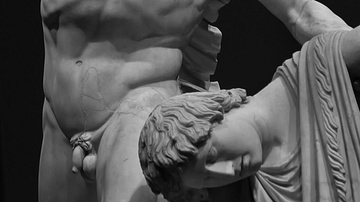
Image
Gaul Killing Himself and His Wife
Ludovisi Gaul; A Roman copy of 3rd century BCE Greek bronze original; 2nd century CE; Palazzo Altemps in Rome, Italy
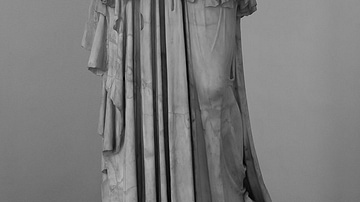
Image
Athena Parthenos, Palazzo Altemps
Athena Parthenos; 1st century BCE copy by Athenian sculptor Antiochus of the famous original from 5th century BCE by Phidias; Arms and nose are part of 17th century CE restoration; Palazzo Altemps in Rome, Italy
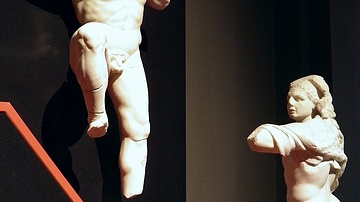
Image
Liberation of Prometheus by Heracles
Statue group depicting the liberation of Prometheus by the Greek hero Heracles. Prometheus is freed from the eagle's torment. Found in the North Hall of the Athena Terrace at Pergamon (Turkey). Dated to 100 BCE. (Pergamon Museum, Berlin)
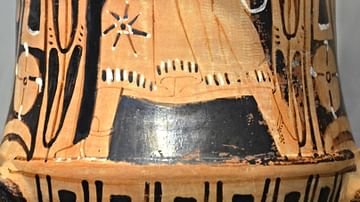
Image
Etruscan Red-Figure Krater with Charun
The Etruscan death demon Charun escorts the deceased to the Underworld. He is characterised by a heavy hammer and a hooked nose. From Vulci (Italy). Around 300 BCE. (Altes Museum, Berlin)
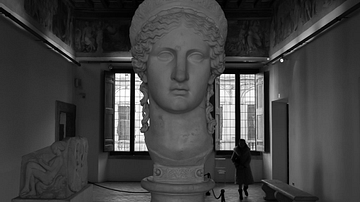
Image
Juno, Ludovisi Collection
Huge head of Juno, part of Ludovisi Collection in Palazzo Altemps in Rome, Italy; 1st century CE
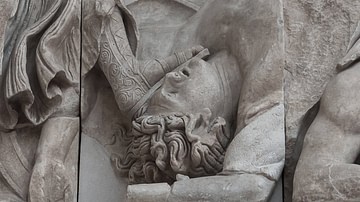
Image
Aphrodite Killing the Giant
Detail from the Pergamon Altar's north frieze (The frieze depicts the Gigantomachy); Aphrodite killing the giant; built in 2nd century BCE; Today in the Pergamon Museum in Berlin.
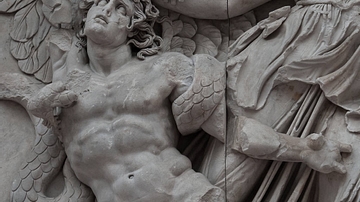
Image
Alkyoneus the Giant Killed by Athena
Detail from the Pergamon Altar's frieze (The frieze depicts the Gigantomachy); built in 2nd century BCE; Today in the Pergamon Museum in Berlin. The detail is part of a scene where Athena kills the giant by separating him from the Earth.
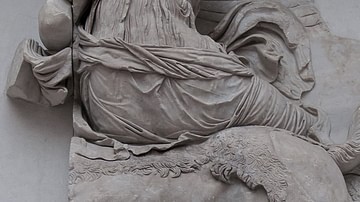
Image
Selene
The moon goddess Selene is riding on her mule over one of the giants. Detail from the Pergamon Altar's frieze (The frieze depicts the Gigantomachy); built in 2nd century BCE; Today in the Pergamon Museum in Berlin.
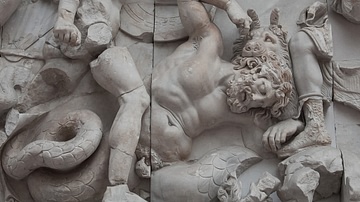
Image
The Giant Killed by Artemis
The giant is killed by Artemis' dog (Artemis' leg on right); Detail from the Pergamon Altar's frieze (The frieze depicts the Gigantomachy); built in 2nd century BCE; Today in the Pergamon Museum in Berlin.
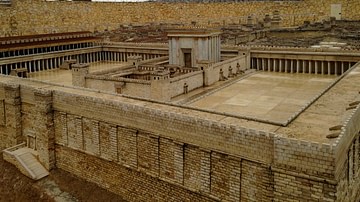
Image
Second Temple Model
A 50:1 scale model of the Second Temple, this detailed replica was originally commissioned by Hans Kroch for the Holyland Hotel in memory of his son, Jacob, following Israel's War of Independence. It was designed by Hebrew University's Professor...